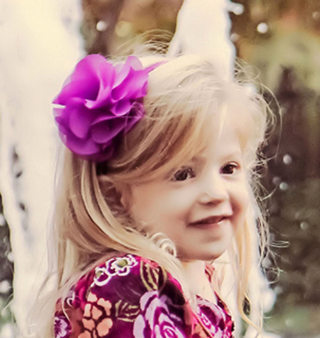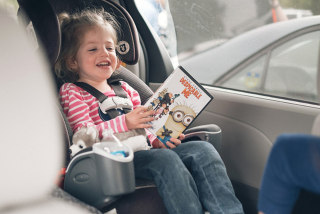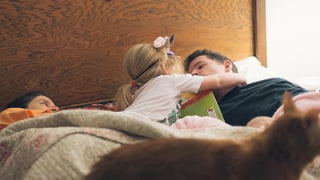The response to my blog post and Eliza's video, is amazing! Not only has the video gone viral, it is causing other media attention. Because of your sharing on Facebook, my last blog has over 3,000 views!
please read the updates and share: Today.com article
donations and tax deductions
.jpg) To clarify, we are not a non-profit 501c3 status, so if you would like to donate directly to us, we can't give you a tax deduction, but we can make sure it gets to the right place. All 3 links below have a 501c3 status if you prefer to get the money to them.
To clarify, we are not a non-profit 501c3 status, so if you would like to donate directly to us, we can't give you a tax deduction, but we can make sure it gets to the right place. All 3 links below have a 501c3 status if you prefer to get the money to them.is this really a cure?
I don't want to mislead anyone. This is funding gene therapy clinical trials. This is essentially a cure based animal research, but only if it works in humans. There is no way to know until they do a clinical trial with children who have Sanfilippo. We are learning about everything as we go, so I don't claim to know everything. This is why the money is so important.
Why parents do the fundraising.
In a perfect world, pharmaceutical companies, like Abbott or Shire, would see the potential of life-saving treatment, and fund the clinical trial. But because Sanfilippo effects a small percentage of the overall population, unlike diabetes, cancer, or heart disease, large pharm. companies don't see gene therapy as a good, profitable investment....and that is the sad reality of rare disorders.
Or, we would need a big, generous donor or celebrity who would support the trial. Which I don't have in my back pocket :)
Did you know there is even a data base filled with potential life-saving drugs for rare disorders that lie dormant because there wasn't is money to continue research? Who knows what cures are lying in there.
So parents, and the friends and family around us, are the only hope to raise funds for treatment at this point. This is a grassroots campaign where every dollar REALLY counts. Remember, the Pepsi texting campaign? This is the same place those dollars went.
Please consider donating even $20 or $50
to Livlife or ElizaONeill or Bens Dream.
We are all working together, not against one another. The more united we can be in our efforts, the better! At this point, donating to one of the three site above is the easiest, quickest, and most helpful thing you can do to support Jayden and Brooklyn.
 local involvement
local involvementWe are still planning on getting together this Saturday morning at 10:00-11:00AM to pray at our house. We also will be sharing some fundraising ideas, so if you have any thoughts, please bring them! Please shoot me a message if you are planning on coming. We may eventually become a non-profit ourself, but that would take too long and cost too much at this point in the game.
Thanks again for reading and sharing, a few simple clicks really make a difference, so if you can't donate....PLEASE share this post!
Thank you!
Here is the today.com article if you don't like following a bunch of links:
Cara and Glenn O’Neill were stunned when doctors diagnosed a deadly, rare and incurable neurological disorder in their bubbly 4-year-old, Eliza. The disease, Sanfilippo syndrome, destroys brain cells and kills its young victims before they are out of their teens.
“We felt like we were in the Twilight Zone,” said Cara, a pediatrician from Columbia, S.C. “It was stunning.”
An internet search revealed even more bad news: the disease would start taking a toll soon. Many kids start to regress by the time they hit 5 or 6, losing the ability to speak, to walk, to feed themselves. “That’s when my heart completely sank,” Glenn said.
But the search also turned up a glimmer of hope. At Nationwide Children’s Hospital in Columbus, Ohio, researchers had discovered a gene therapy that cured the disease — but so far, only in mice.

Stacey Quattlebaum / O'Neill Family
Affectionate, happy, active, "the kind of girl who keeps you on your toes," is how her mother Cara describes Eliza O'Neill. Her parents are raising money to research a treatment for Sanfilippo syndrome, a fatal disease that will likely kill Eliza in her teens unless a cure is found.
The researchers were ready to start testing the therapy in kids, but they needed to raise $2.5 million to put together a clinical trial. And because Sanfilippo is rare, no drug companies were signing on to fund it.
For Eliza, every moment counts. At 4, she is approaching the age when kids with Sanfilippo start losing abilities and even if the therapy would halt the disease, it wouldn’t bring back the brain cells that had been destroyed.
So the O’Neills turned to the internet once again, this time to raise the money needed for the clinical trial. Glenn actually Googled "how to make a viral video" — his first effort, a homemade video on gofundme.com, garnered donations, but not nearly enough to make a clinical trial possible.
That all changed when Benjamin Von Wong, a Canadian filmmaker, volunteered to help. He and his team spent eight days documenting the family’s story. The new video went viral with the hashtag #SavingEliza, and in six months the family has raised more than $380,000 for research.
On the video, a teary Glenn says of Sanfilippo syndrome, "You know where it's headed, it's headed toward suffering, it's headed toward pain for her. And as a father, you want to be able to protect your children."
"Hope is a nice word," mom Cara adds, "but we need action."
There is no cure. Even if the O’Neills manage to raise the $2.5 million, they know it doesn’t guarantee Eliza will be helped. She may not qualify for the trial, though researchers think she probably will. The trial may not work. And there are always risks with any unproven therapy.
With no other treatments available, those risks seem minor when weighed against the certain death that awaits Sanfilippo kids.
“As a parent, you have to be the advocate for your child,” Cara said. “You have to give them the best shot possible. And this is her best shot.”

Benjamin Von Wong / O'Neill Family
Sanfilippo syndrome usually starts to affect children around age 5 or 6; Eliza O'Neill is 4. Her parents are hoping to get her into a research trial this year.
Children with Sanfilippo syndrome are born with two copies of a faulty gene. Normally, the gene makes an enzyme that breaks down long chains of sugar molecules called glycosaminoglycans, or GAGs. They “are the glue that holds cells together,” explained Dr. Kevin Flanigan, a principal investigator at The Research Institute at Nationwide Children’s Hospital and a professor of neurology at the Ohio State University College of Medicine. Because the enzyme needed to break the GAGs down is missing, that "glue" just keeps accumulating in the cells, gunking them up and eventually killing them.
Researchers working on rare diseases like Sanfilippo syndrome often have to turn to foundations and other sources for funding. As for the O’Neills’ fundraising efforts, Flanigan said, “the amount of money they have set out to raise should allow us to complete the trial.”
The fix developed by Flanigan and his colleagues is to attach functioning copies of the gene to a harmless virus that is injected into the patient.
The beauty of the virus is that it can pass through the blood brain barrier, which means that it can be injected intravenously instead of directly into the brain, said Haiyan Fu, the researcher who started the project about 16 years ago and a principal investigator at Nationwide’s Research Institute.
The virus “infects” cells with a working copy of the gene, and delivers a correct copy of the gene to enough cells that it can fix the damage.
Tests in a mouse model were stunningly successful.

Benjamin Von Wong / O'Neill Family
Eliza O'Neill cuddles with mom Cara and dad Glenn, who are desperately trying to find a treatment for her rare, fatal disease.
But mice aren’t humans and there are plenty of examples of promising therapies that cured diseases in mice but didn’t help a single person.
More worrisome is the lack of any safety data in children. It’s always possible that the body will react badly to the therapy and mount an immune response, said Dr. James M. Wilson, director of the gene therapy program at the University of Pennsylvania. Wilson’s lab developed the viral vector being used at Nationwide.
“The possibility of an immune response is something that families clearly need to be aware of,” Wilson said. “But depending on how severely affected a child is, the benefits may outweigh the risks.”
That calculation is a simple one for the O’Neills. If their daughter doesn’t get the gene therapy soon, she will start to regress and she will die in her teens.
“I think for this patient at this point the best bet is to try to get into a clinical trial,” said Dr. Maria Escolar, director of the program for neurodevelopment of rare disorders at the Children’s Hospital of Pittsburgh at the University of Pittsburgh Medical Center. “This is probably the worst thing a parent can see: their child deteriorating before their eyes and they can’t do anything .”
Desperation has turned parents into advocates finding the dollars to move research along.
“I’ve been working in this field for 15 years,” Escolar said. “The biggest changes are because of parents, not the pharmaceutical industry, or the researchers. Parents push it.”
That certainly describes Jennifer Seidman. Her son Benjamin was diagnosed with Sanfilippo syndrome when he was 2. Like the O’Neills, Seidman quickly discovered there was no cure or even any therapy.
She started Ben’s Dream — The Sanfilippo Research Foundation, Inc. hoping, just as the O'Neills now do, that the money they raised might help researchers find a cure in time for her son. But Ben died this February, just a week shy of his 18th birthday.
“It’s heartbreaking and we miss him every day,” Seidman said. “But we’ve continued to move this research forward because I don’t ever want another mother to feel the way I feel and if I could prevent that, it would be a wonderful thing for me personally.”
And it might help the Seidmans find some meaning in what Ben went through.
“Fifteen years ago, I promised my son I would cure this disease,” she recalled. “Although I couldn’t do it in time for him, I’d love to leave a cure as part of his legacy.”
Linda Carroll is a regular contributor to NBCNews.com and TODAY.com. She is co-author of "The Concussion Crisis: Anatomy of a Silent Epidemic” and the forthcoming "Duel for the Crown: Affirmed, Alydar, and Racing's Greatest Rivalry"






